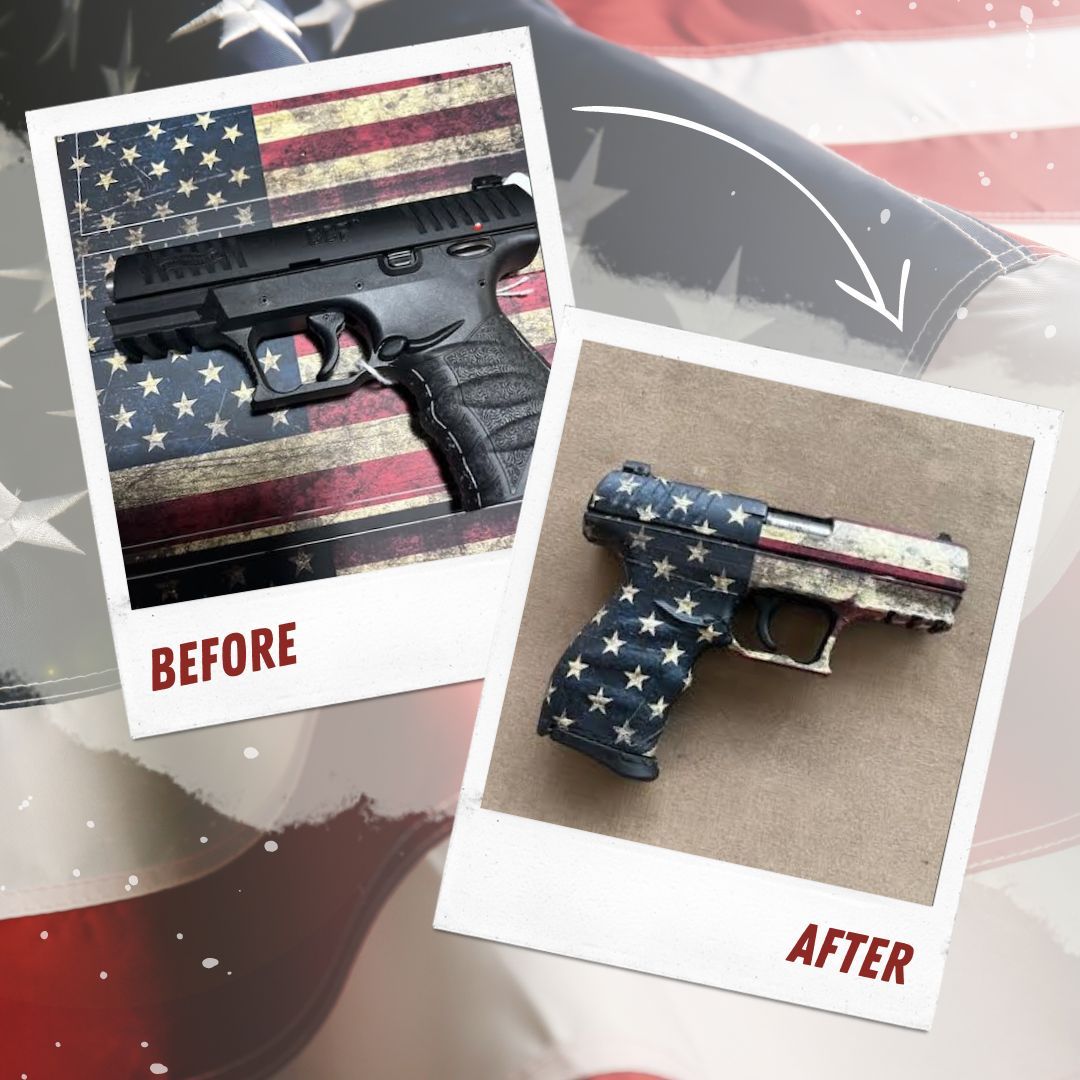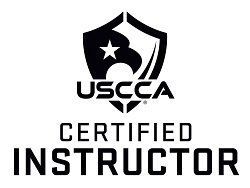.223-.556 Ammo Information
Gregory Kielma • October 21, 2023
223 Remington/5.56 x 45mm NATO Cartridge

223 Remington/5.56 x 45mm NATO Cartridge
Hey Gregory,
Today's workbench is written by guest contributor and AGI Certified Gunsmith and GCA Moderator Robert Dunn:
There isn’t a day of my life that goes by that I don’t work with, reload, think or write about the .223 Remington and 5.56 NATO cartridges. Those cartridges are what a couple of my favorite and most used rifles are chambered for.
When I worked in an ammunition factory, I would sometimes get paid in .223 ammunition. When I was growing up in the early 1970s I became familiar with the .223 Remington cartridge, as it was the new round being used by our Armed Forces.
Warfighters throughout the world had realized the advantage of automatic firepower, but finding the perfect firearm and cartridge design is a huge challenge. In the case of the .223 Remington, many sources helped bring this cartridge into use by both civilians and the military.
Eugene Stoner of ArmaLite (then a division of Fairchild Industries) had gained the attention of the Military with his 7.62 x 51mm chambered AR-10 rifle. Like many high powered rifles, the AR-10 was hard to control during automatic fire.
Consequently, Fairchild Industries and Stoner were asked to scale down the AR-10 to fire a smaller caliber cartridge. Stoner came up with a prototype AR-15 and after a demonstration for the army, he was asked to produce more rifles for testing in 1957.
Select engineers and other companies like Remington Arms, Winchester as well as ArmaLite were asked to take part in developing this project. Springfield Armory’s Earle Harvey lengthened the .222 Remington case to the required specifications and it became the .224 Springfield, which was commercially known as the .222 Remington Magnum.
Frank Snow (of Sierra Bullets) and Eugene Stoner calculated the ballistics data for the .222 Remington to find the best bullet for the project, which ended up being a 55 grain bullet. Meanwhile, the Technical Editor for Gun and Ammo magazine, Robert Hutton, worked up a propellant recipe that could attain a velocity of 3,300 fps. Ultimately, Remington came up with the .222 Special cartridge, which was later renamed the .223 Remington because there were so many .222 designations.
Just a few of the military requirements for the firearm and cartridges were that they needed to be able to penetrate one side of a US Steel helmet at 500 yards, had to be able to exceed supersonic speed at 500 yards, had to be .22 caliber and select fire. From years of research and development of the AR-10 and AR-15, ArmaLite was facing financial difficulties and sold the rights for the rifles to Colt in 1959.
The AR-15 and the T44E4 rifle that would later be known as the M14 were being testing at the same time. To make a long story short, it was found that the AR-15 had far less failures per 1,000 rounds fired and that riflemen had a higher hit probability when firing Stoner’s rifle.
After Air Force General Curtis Le May test fired the AR-15, he ordered a batch of AR-15s to replace some of the M2 carbines that the Air Force was using. As the trials and testing continued, it was found that during marksmanship testing that many more men were achieving Expert shooting status with the AR-15 than they were with the M14. With these findings and the failure rate of the AR-15 going down even further, General Le May placed an order for 80,000 rifles in 1961.
In 1962, Remington filed the specs for the .223 Remington cartridge with SAAMI (Sporting Arms and Ammunition Manufacturer’s Institute) and the cartridge was later marketed commercially as a chambering for the Remington 760 rifle in 1963.
At this point in time, the United States was embroiled in the conflicts arising in Southeast Asia. It was politically decided that contracts for rifle manufacturing could be bid on by the private sector and Colt was awarded the contract to provide AR-15 rifles to fill orders for the Vietnam War.
The AR-15 rifle and the .223 Remington cartridge were formally adopted in 1964 and designated the XM16E1 rifle, commonly referred to as the M16, and the 5.56 Ball M193 cartridge. It was decided that the South Vietnamese troops would be supplied with the M16 rifle. Eventually, the Air Force, the US Army, Special Forces, the Coast Guard, the US Navy, the Marines as well as the SEAL teams had orders in for M16 rifles and cartridges. In 1965, Colt received orders for 800,000 M16E1 rifle and over 28,000 M16 rifles.
The M16 and the 5.56 Ball ammo would go through some major growing pains as the rifles and cartridges were issued to troops in Vietnam. Besides not being trained on how to properly clean the gun, the rifle suffered from many types of jams and failures.
Broken extractors and extractor springs accounted for many ejection failures and through more research, it was found that the propellant being used in the cartridges was creating horrific fouling of the gas and bolt system. The ball powder that was being used also created a longer pressure spike, which caused the case to expand in the chamber but it would not contract enough to be extracted.
The extractor would simply tear through the case rim, leaving the stuck case in the chamber. By using a different propellant, chrome plating the barrels and replacing the buffer with a new design that slowed down the cyclic rate, along with some other design changes, the problems were gradually sorted out. Unfortunately many American lives were lost because of these errors.
The process of selecting a smaller cartridge for use by NATO forces began in 1960. The cartridge design was based on the .223 Remington cartridge and its development was placed in the hands of FN Herstal. The rimless bottlenecked cartridge was named the 5.56 x 54mm NATO cartridge.
In 1980, the 5.56 NATO cartridge became the standard NATO rifle cartridge (known as the SS109 for NATO and the M855 for the United States). The 5.56mm cartridges allowed the soldier to be able to carry more ammunition, which equated to more firepower and logistically many more rounds could be transported to hot spots around the world by weight than the larger 7.62 NATO cartridges. On a global scale this can equal a savings of millions of dollars.
The number of firearms that are chambered for the 5.56 NATO cartridge is too numerous to list here. Just think about all of the different squad automatic weapons, rifles, carbines and machine guns that each NATO country uses…that is a lot of different weapons!
The Frankford Arsenal, Remington and Winchester produced the first lots of .223 ammunition for the United States Armed Forces. During the trials and testing of the AR-15, 19 Million .223 cartridges were purchased. When a cartridge does well for the military, the Law Enforcement and civilian communities usually follows their lead. If you have ever read the 27 page document for the military specifications for the M855 cartridge (5.56 x 54mm), you can see that heavy scrutiny has already been applied to the 5.56mm round!
The .223 Remington cartridge has become one of the most used cartridges in the United States. It is a great varmint and predator cartridge and could be used for larger game if need be by loading a heavier bullet like a Hornady GMX or Barnes TSX 70-grain projectiles. These slower moving heavier bullets seem to do quite well in windy conditions. The above attributes make the 5.56mm round a flexible survival cartridge too.
You may have noticed or even been annoyed by the interchanging .223/5.56 terminology, here are of the important similarities and difference between the two cartridges. The case dimensions are exactly the same, though case thickness/propellant capacity can vary significantly between manufacturers which will have an effect on the resulting pressures.
The 5.56 x 45mm NATO or other military 5.56 ammo tends to be loaded hotter, so chamber pressures will be greater than the typical .223 Remington load. For this reason, .223 Remington rounds can be safely fired in a 5.56 chambered gun but 5.56mm ammo should not be fired in a .223 Rem chambered gun.
The reason for this really comes down to the differences in the chamber dimensions between .223 and 5.56 barrels. The throat/free bore and leade of a 5.56mm chamber is longer. The throat of the chamber is the unrifled section of the chamber just forward of the neck and gives the bullet a place to sit. Leade or lead is the section of the bore of a rifled barrel located just ahead of the throat of the chamber. It is a conical shaped transition from end of the throat to the fully rifled part of the barrel.
In an effort to gain more accuracy from the 5.56mm NATO cartridge, Bill Wylde created the .223 Wylde, which is a chamber design that utilizes the same external dimensions and lead angle of a 5.56 NATO cartridge and the freebore diameter of the .223 Remington cartridge. Another company that uses a proprietary chamber design to achieve better accuracy from the 5.56mm NATO cartridge is Noveske. A Noveske barrel is not cheap but they are known for their precision and high quality products.
SAAMI specs are followed by manufacturers in the U.S. loading .223 Remington ammo but those same manufacturers who also load 5.56 ammo do not follow SAAMI specs because the 5.56 rounds are loaded to military specifications and thus not held to SAAMI specs. In Europe, the international organization C.I.P. tests and sets the safety standards for firearms and ammunition. In countries that are regulated by the C.I.P., .223 Remington ammunition is proof tested at the same maximum service pressure as the 5.56 x 54mm NATO cartridges.
There have been a lot of challenges that had to be met throughout the history of the AR-15 and the 5.56 x 54mm cartridge. The twist rate of a barrel and the chamber dimensions greatly effect performance and accuracy. The shorter barreled M4 carbines and the requests for even shorter barrel lengths coming from the Special Forces communities have kept firearms and ammunition engineers busy. At this point in time, the AR-15 style rifles and the .223 Rem and 5.56 NATO cartridges offer a very reliable and accurate shooting platform.
The AR-15 rifle and .223/5.56 cartridge combination have gone through many changes together. They are still being used by our Military/Law Enforcement and civilian populations to good affect every day. This combo is a must for 3-gun competition. The .223 Remington cartridge is not overly expensive and there is always a wide variety of ammunition to choose from. There is a lot of surplus ammo to select from as well. Many other firearms are chambered in .223 Rem besides the AR-15 type guns.
The 5.56mm round is a good cartridge to reload for, as there is a huge variety of quality components to choose from as well. In 1964, the year I was born, these cartridges were the new warfighting cartridge and the US Armed Forces began using them. It’s easy for me to remember how many years these cartridges have been in use!
Become an American Gunsmith and continue to preserve our Firearm’s Heritage!
Robert Dunn,
Gunsmith & Community Moderator
American Gunsmithing Institute
Gunsmithing Club of America

Glock Confirms V Series, Discontinues Gen 4 & Gen 5 Pistols Austrian gun company Glock revealed company plans to discontinue a large portion of its pistols starting in November. Glock issued a statement on October 21, 2025, regarding the leak of the company’s plans. “Yesterday, a retailer NOT affiliated with GLOCK Inc. made premature statements concerning the availability of certain GLOCK pistols. The individuals making these representations are not authorized to speak for GLOCK. As part of GLOCK’s commitment to future innovations, we are making necessary updates to our product line to align with upcoming offerings. Our dedication continues to be with maintaining the highest level of quality, reliability, and accessibility that you expect from GLOCK. The GLOCK V Series is here to establish a baseline of products while simplifying our processes.” According to the company, V models will be available December 2025 and will include the following models: • G17 V • G19 V • G19X V • G45 V • G26 V • G20 V MOS • G23 V • G23 V MOS • G21 V MOS • G44 V Glock also said that distributor exclusive models will be available, including: • G19C V • G45C V • G17C V • G19X V MOS TB Glock Store posted about Glock’s plans on social media, saying they’d received word that all Glocks will soon be discontinued except for the Glock 43, 43X, and 48X. Glock G19 According to Glock Store, the discontinued models will be usurped by all new Glock models known as “V Models.” The newer pistols will not come in MOS formats upon launch but will include features that prevent Glock pistols from being used along with switch conversion kits that make them full auto. Glock 17 converted to full-auto Tactical K Training and Firearms reached out to Glock for comment but received no word by the time of publishing. We confirmed with multiple sources close to the company, though, that they too have been informed that starting November 30, 2025, Glock will stop shipping the discontinued models. That said, Glock’s own webpage lists popular models like the Glock 17, Glock 17 MOS, Glock 19 Gen 4, and more as discontinued. According to the page, the decision to cut models out of the lineup was a strategic one. “In order to focus on the products that will drive future innovation and growth, we are making a strategic decision to reduce our current commercial portfolio,” the company said. “This streamlined approach allows us to concentrate on continuing to deliver the highest-quality and most relevant solutions for the market.” Though Glock says the move is to provide a more focused lineup for consumers, California just announced last week that it was banning the sale of pistols that could be converted to “machineguns” — effectively putting an end to sales on most Glock pistols and Glock clones in the state. Though Glock appears to be discontinuing some pistols, it does say support will remain for owners of discontinued models.

St. Paul Mayor Melvin Carter St. Paul Mayor, Councilors Considering Ban On Many Common Semi-Auto Firearms Mark Chesnut - St. Paul’s Proposed Assault Weapon Ban Draws Fire Over State Law Violation The decision by St. Paul, Minnesota, city councilors to push forward with a plan to ban so-called “assault weapons” and “high-capacity” magazines is drawing fire from a state gun owners’ group. At their October 22 meeting, councilors introduced a proposal that would ban many common semi-automatic rifles and high-capacity magazines that hold more than 10 rounds within the city limits. “We have to do something,” said St. Paul Mayor Melvin Carter, who is backing the proposal. “What we’re saying isn’t that you can’t make, sell, or own an assault rifle. What we’re saying is don’t carry it down Grand Avenue.” Mayor Carter did not elaborate on whether carrying an “assault weapon” down Grand Avenue was currently a big problem in the city. The main downfall of the proposal, which is likely to pass given the council’s support, is that it violates the state’s firearms preemption law, which was enacted for just such a purpose. That law states: “The legislature preempts all authority of a home rule charter or statutory city, including a city of the first class, county, town, municipal corporation, or other governmental subdivision, or any of their instrumentalities, to regulate firearms, ammunition, or their respective components to the complete exclusion of any order, ordinance or regulation by them except that: (a) a governmental subdivision may regulate the discharge of firearms; and (b) a governmental subdivision may adopt regulations identical to state law. Local regulation inconsistent with this section is void.” That’s just one of the sticking points with the Minnesota Gun Owners Caucus (MGOC), which trashed the proposal in a recent action alert.

17 Anti-Gun AGs Side With Hawaii On Purchase Permits, Inspection Requirement Mark Chesnut - A coalition of anti-gun attorneys general from 17 states has filed an amicus brief with the San Francisco-based 9th Circuit Court of Appeals in support of two restrictive Hawaii laws being challenged as unconstitutional under the Second Amendment. The lawsuit revolves around two provisions of Hawaii’s permitting regime— a 30-day time limit to purchase a firearm after receiving a permit and a requirement that police inspect legally purchased firearms within five days. The brief argues that not only do the laws directly violate the Second Amendment, but they also lack historical support and impose undue burdens on law-abiding citizens exercising their constitutional rights. In March, a three-judge panel of the 9th Circuit Court struck down the two provisions, but the state government appealed to the full 9th Circuit. However, the brief from the 17 anti-gun AGs urges the 9th Circuit’s en banc panel to reverse the decision striking down the provisions. The brief claims that states’ interests in implementing “appropriate, reasonable regulations tailored to their specific circumstances” is more important than the protections afforded by the Second Amendment. Heading up the AGs’ efforts is California Attorney General Rob Bonta, one of the most anti-gun attorney generals in the country. In Other NEWS Anti-Gun Lies March 23, 2025 The Violence Policy Center (VPC) has set its sights on banning .50... “No one should be made to live in fear: States have both the responsibility and the authority to protect their communities from the threat of gun violence,” Bonta said in a news release announcing the filing. “Commonsense gun restrictions help stop dangerous weapons from reaching the hands of those who shouldn’t possess them, while upholding law-abiding gun owners’ Second Amendment rights. We will continue to stand up for States’ legal authority to enact laws to maintain public safety, including constitutional gun regulations that respond to local needs and concerns.” Joining Bonta in filing the brief were attorneys general from Colorado, Connecticut, Delaware, Illinois, Maine, Maryland, Massachusetts, Michigan, Minnesota, New Jersey, New York, Oregon, Rhode Island, Vermont, Washington and the District of Columbia. Gun-rights groups are also heavily invested in the case, with the Second Amendment Foundation (SAF) filing a brief arguing against the constitutionality of the provisions. Alan M. Gottlieb, SAF founder and executive vice president, said the amicus brief is part of his organization’s ongoing mission to defend, secure and restore the Second Amendment rights of Hawaii residents. “These arbitrary restrictions in Hawaii are unique and burdensome, with no parallel in other states,” Gottlieb said. “We urge the Ninth Circuit to either reinstate the three-judge panel’s ruling striking down these laws or rule in favor of the plaintiffs, ensuring that the Second Amendment is treated with the respect it deserves.”

ATF Reports Soaring Seizures of Machine Gun Conversion Devices — But What’s Really Driving the Numbers? Scott Witner Des Moines, IA — According to Des Moines Police Chief Michael McTaggart, local officers are encountering more “machine gun conversion devices” (MCDs). These tiny parts can turn semi-automatic firearms into fully automatic weapons. While that might sound alarming to some, the reality is far more complex than the headlines suggest. The Hype vs. the Reality MCDs, also known as switches or auto sears, are about the size of a quarter and can be 3D-printed or purchased online for next to nothing. The ATF claims law enforcement agencies across the U.S. have seized an increasing number of them, from just 658 in 2019 to 5,816 in 2023, a reported 784% increase. Critics, however, argue that the surge says as much about enforcement priorities and ATF reporting methods as it does about actual criminal trends. A fivefold increase in data collection doesn’t necessarily mean a fivefold increase in use, especially when most seizures come from possession or manufacturing cases, not violent crimes. State and Federal Tug-of-War Adding to the confusion, the ATF recently walked back one of its own enforcement actions. In early 2024, “forced-reset triggers” (FRTs), which the Biden administration had previously ordered seized, were reclassified as lawful for use with semiautomatic rifles under a settlement reached during the Trump administration. The agreement required certain manufacturers to halt development of pistol versions of these devices, while thousands of previously confiscated rifle triggers were ordered returned to their owners. Still, the government won’t allow them to be redistributed in 16 states that chose to block the deal, Iowa not among them.

Judges rule some Florida gun laws are unconstitutional. Here's what to know Story by KATE PAYNE US Florida Gun Laws What to Know TALLAHASSEE, Fla. (AP) — A pair of court rulings declaring some of Florida's gun restrictions unconstitutional are creating some confusion in the notoriously firearm-friendly state — and fueling activists' calls for Republican legislators to take action to update state statutes so they abide by the new legal landscape. US Florida Gun Laws What to Know Despite Florida's history of being a gun-supporting climate, Florida's GOP-dominated state Legislature took steps to restrict gun laws in the wake of the 2018 mass shooting at Marjory Stoneman Douglas High School in Parkland. Since the day the measure was signed into law, gun rights advocates have been pushing to unravel it. US Florida Gun Laws What to Know Now, activists say recent court rulings are fueling their push to expand gun rights in the state, emboldened by U.S. Supreme Court's updated standards for evaluating gun laws based on the nation’s historical tradition of firearm regulation. “Leaving unconstitutional laws on the books creates nothing but confusion,” said Sean Caranna, executive director of the advocacy group Florida Carry. Open carry ruling sparks questions Florida's First District Court of Appeal issued its ruling last month in a case stemming from the July 4, 2022, arrest of a man who stood at a major intersection in downtown Pensacola carrying a visible, holstered pistol and a copy of the U.S. Constitution. The decision legalizes open carry, though there are preexisting limitations against carrying in a threatening manner or in certain restricted spaces like government meetings, schools and bars. The ruling has prompted some Florida sheriffs to urge caution among gun owners and seek clarity from lawmakers. Legalizing open carry has long been a major focus of gun rights activists in the state, who oppose the slate of restrictions that Florida’ lawmakers implemented in the wake of the Parkland school shooting, which killed 17 people and injured 17 others. Among the law's provisions was raising the legal gun-buying age to 21. Advocates push for expanding gun laws In the years since the 2018 Parkland shooting, lawmakers' efforts to lower the gun-buying age to 18 have advanced in the Florida House but ultimately failed in the state Senate. Now some advocates say the recent court rulings should force the hand of legislators who have opposed expanding gun rights in the past. "I hope that given some of the recent decisions from the United States Supreme Court and the Florida courts, that they will finally see that the Second Amendment is not a second-class right," he added. Representatives for Florida's House speaker and Senate president did not immediately respond to inquiries Wednesday. ___ Kate Payne is a corps member for The Associated Press/Report for America Statehouse News Initiative. Report for America is a nonprofit national service program that places journalists in local newsrooms to report on under covered issues.

Liberal Democrat The Late Diane Feinstein: Don't be LIKE DIANE Why do gun enthusiasts all do the “trigger discipline” ? Why? Because you never have your finger on the trigger, ever, until you are on target and ready to pull it. The Rules of GUN SAFETY 1.) Treat all firearms as they are loaded. ALWAYS 2.) Never point the firearm at anything you do not wish to destroy. EVER. 3.)Keep your finger off the trigger until your sights are on target, 4.) Always be sure of your target and what's beyond it. This is taught so that you do not hurt or kill someone. Trigger discipline is a fast an easy thing to see if someone at least has some idea of gun safety. Diane Feinstein another liberal (deceased) who knows nothing and continued to spout her righteous thoughts about firearms and knew nothing. (see top picture) If you will look closely, her finger is on trigger, drum magazine is loaded, bolt is closed, and safety is off. There is no way to tell that she is not about to shoot a poor person off screen to her left. Diane Feinstein, a famous antigun senator, does not know even basic gun safety. I have seen literal children handle guns with more safety than this. What worries me is that you think this is posing. This is not to be “badass”, this is so that you do not shoot someone by mistake. What is funny is if you go to any range you can tell who hunter or sport shooter is. Because trigger discipline is habit, not posing, you will see men holding drills with trigger discipline. We teach this all the time with his drills. This is muscle memory. Look for people holding a firearm unsafe. Make it a teachable moment. It may save there life or a family member. Only when you’re ready, and on target should you touch the trigger.

I am teaching a course on how to disarm a gun owner. It is not a self-defense class but is geared towards firearms confiscation. How much should I charge? From an avid reader of many websites, including mine, his thoughts on disarming a lawful CCW person . Gregg Kielma say's, "If I could locate the jurisdiction you lived in sir, I'd report you and this post to them" . Continues Kielma an FFL and Instructor of Firearms , “for the individual teaching this please don’t. It’s not up to you to disarm a lawful CCW person that is for law enforcement not you sir. This truly boarders on insanity. Nothing good will come in this situation. Let’s Take a Look I open carry my pistol, a Canik Rival with an 18 round magazine and optics mounted. I don't conceal this, and I never keep a single round even in the magazine, let alone in the chamber. I simultaneously carry my Taurus gx4 XL concealed, loaded, and chambered, in my waistband. The second anyone ever reaches for my open carry gun; they will be surprised when I don't stop them from taking it. They will be even more surprised when I aggravate them to shoot me. And assuming they pull the trigger, they will be most surprised to find the gun was never loaded, but the one I am currently shooting at their head is. I honestly doubt you could teach someone how to punch their way out of a paper bag. But assuming you can find people even more ill-informed then yourself, please let us know ASAP so we can report you to the FEDs.

Considering Concealed Carry? Be Safe, Be Smart, Be Ready—Here’s How and WHY Tactical K Training and Firearms Kielma says, as a firearms instructor, CCW and your training must go hand in hand. Repetition with your carry firearm is critical. Holsters are critical. Holster placement is critical. Your weapon of choice is critical. Train with me and we can put a plan together that fits your lifestyle and comfort. You must be trained and prepared! NOW: LET’S TAKE A LOOK Carrying a concealed weapon is a serious responsibility that goes beyond simply owning a firearm. It means choosing suitable gear, training until actions are smooth, and keeping a clear head when situations turn tense. The right holster fits your body, hides the gun, and lets you access it safely. Good practice builds good habits. Carrying a concealed weapon is a serious responsibility that goes beyond simply owning a firearm. It means choosing suitable gear, training until actions are smooth, and keeping a clear head when situations turn tense. The right holster fits your body, hides the gun, and lets you access it safely. Good practice builds habits, so you don’t freeze or act on impulse. Equally vital is mindset: knowing when to avoid danger, when to seek help, and how to keep bystanders out of harm’s way. Learn your local laws, store your gun safely, and train regularly. This guide lays out foundational tools, simple drills, and common-sense rules that help responsible carriers act with care and calm. Read on to build skill, reduce risk, and gain confidence when you carry. Take Training Seriously One of the biggest mistakes people make when getting their concealed carry permit is assuming that the basic certification is enough. Unfortunately, many concealed carry classes barely scratch the surface of what it takes to responsibly handle a firearm in real-world situations. Just because you passed the class doesn’t mean you’re ready to carry. Start Slow, Build Confidence It’s easy to watch experienced shooters hit targets from 25 yards out and feel like you need to do the same. But starting at longer distances can be discouraging, especially for new shooters. Instead, begin your practice sessions up close, around five yards, and work your way back as your confidence builds. The goal is to establish good shooting habits and accuracy before adding in the stress of longer distances or rapid-fire drills. Real-World Drills In a self-defense scenario, you’re unlikely to be standing still with a perfect sight picture. That’s why it’s essential to incorporate movement into your training. Practice moving backward, side to side, or even retreating while firing. These real-world drills mimic situations where you might need to defend yourself while on the move. By practicing these techniques, you’ll build muscle memory, so you’re prepared to act quickly and efficiently when under stress. Training Is Non-Negotiable The most important takeaway from carrying a concealed weapon is that your rights come with responsibilities. Simply owning a gun and carrying it isn’t enough – you must commit to regular, meaningful training. Whether it’s live fire at the range, dry fire at home, or studying real-world scenarios, being a protector means being ready for anything. Take the time to train, because when the moment comes, there won’t be time for second chances.

GOA Wins Permanent Injunction Against Virginia “Universal” Background Checks Mark Chesnut On October 16, Gun Owners of America (GOA) announced that it, along with the Gun Owners Foundation (GOF) and Virginia Citizens Defense League (VCDL), had secured a permanent injunction against the commonwealth’s law mandating so-called “universal” background checks. “The statute as it stands, cannot remain intact,” the injunction filing stated. “If the legislature wishes to rewrite the law to create a system that does not impose disparate treatment based on age, it may do so. At that time, a court might rightly address the question of whether it is constitutional to require a background check to obtain a handgun through a private sale. Now is not that time.” The ruling made clear, however, that it wasn’t ruling on the constitutionality of lack thereof of background checks themselves. “Let it be clear, the Court today is not holding that background checks are unconstitutional,” the ruling concluded. “That is a question for another day, perhaps another court. Today, the Court holds that the manner in which Virginia Code Section 18.2-308.2:5 is applied cannot pass constitutional scrutiny. If the Court were to merely hold the Act unconstitutional as-applied and simply sever those 18 to 20 years of age, the Court would be ignoring the constitutional deficiencies in the enforcement of the Act. After applying the Ayotte framework, the Court finds that it is left with one option at this time—that is, to strike the statute in its entirety for the reasons set forth herein. The long-running lawsuit was filed way back in 2020, proving once again that finding justice can be a very slow process. But the win also proves that dogged tenacity in pursuing right is often rewarded handsomely.

SAF Lawsuit Challenges Unwarranted Search Of High School Senior’s Truck Mark Chesnut Just because a person is known to be a gun owner doesn’t mean that authorities can search his or her vehicle at a whim without regard to Fourth Amendment protections. Most of us would agree with that statement simply out of respect for the U.S. Constitution. And, in fact, that’s the very argument the Second Amendment Foundation (SAF) is making in a court battle just launched in Washington State. As background, 18-year-old Hillsboro-Deering High School senior Jack Harrington lawfully owns a handgun and sometimes keeps it in his truck in full compliance with all federal and state laws. However, he always removes the gun when he drives his truck to school. According to an SAF news release, when school authorities became aware of Harrington’s gun ownership on April 24, he was subjected to aggressive interrogation by district employees, which culminated in his vehicle being searched without consent. The school had no reason to believe Harrington brought his firearm to school, and no firearm was found during the invasive and unconstitutional search. Bill Sack, SAF director of legal operations, said that being public about exercising your private rights cannot be grounds for being harassed and searched on campus. “The apparent position of the school district here is ‘choose to exercise one right, give away another,’” Sack said. “That’s just not how it works. If simply being a gun owner is legal justification to be harassed and searched by authorities, what would stop them from submitting gun owners like Jack to searches every day? And what’s their proposed solution to avoid that abuse, that he sells his privately owned firearm?”















